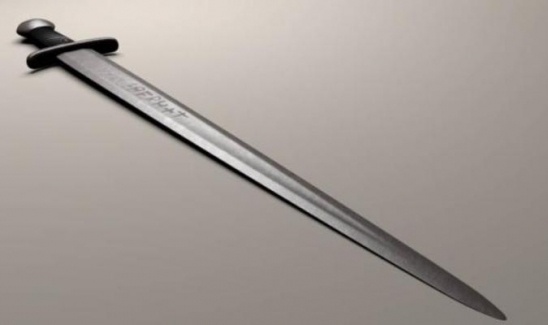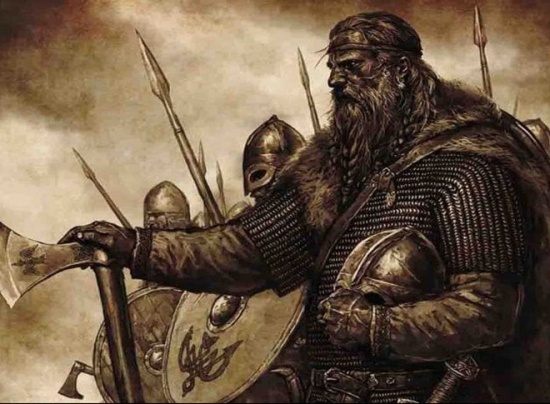Uncategorized
Two things make the strength of Viking warriors
The Viking era began at the end of the 8th century and lasted until the middle of the 11th century. Vikings are often referred to as roving warriors on ships that used to be an obsession with many countries. The might of the Vikings at the time was undeniable…
The special martial art of the Vikings
Between the 8th and 11th centuries in Europe, Vikings were the fear of many nations. With a powerful navy, they looted everywhere. In the 800s – 1050s, the Vikings often used small boats with high durability and speed at sea to loot wealth in neighboring countries such as Iceland (Iceland), Sweden, Denmark, England or the Netherlands. .
Vikings represent those knowledgeable in navigation and adept in the conflicts between the lords of Northern Europe. They often play the role of merchants who go to trade and exchange and then loot if they see an opportunity.
The Vikings often did not invade the land to rule, but only waged war and created a trading power in the area of Northern and Eastern Europe. They are the worry of the majority of the population scattered along the coast because the Vikings are large, strong and very barbaric.
They often attack villages and monasteries in a flash and steal gold, silver, jewels and beautiful young women. In particular, the Vikings were very good at sea, they sailed across Europe and the North Atlantic on long boats, raiding and plundering, conquering most of the rich lands, and then settling in the occupied lands. Okay.
The Vikings were famous for being good warriors. The advantage of these armies from Northern Europe makes many people assume that they are Vikings and must know how to fight.
In fact, due to the requirements of that period, both male and female Vikings learned martial arts from a very young age. Their favorite martial art and fighting platform is called Glima. Thor, the famous god of thunder in Norse mythology, is known as one of the best Glima warriors.
Basically, Glima is a system of personal self-defense moves such as punches, kicks, locks, pokes, etc., which are synthesized from many other martial arts. This martial art places great emphasis on strength, reflexes and especially assertiveness. Because not only for fighting, practicing Glima helps the Vikings increase their ability to withstand harsh weather conditions.
Right from the age of 6, 7 years old, children here have been taught Glima. Thanks to that, Viking always possessed a strong warrior team during the most flourishing period. In training, Glima split into 3 branches: Brokartok, Hryggspenna and Lausatok. Brokartok is the most popular and considered traditional Icelandic martial art.
When training against each other, 2 wrestlers will have to wear 2 separate belts around the waist. Then the two sides grabbed this belt and tried to knock the opponent down. The first person to knock the opponent to the ground wins.
Vikings also set very specific rules when competing such as: Gladiators must always stand upright, walk clockwise, are not allowed to shove the opponent without holding the belt. With rules and not too dangerous competition, Glima Brokartok was included in the program of competition at the 1912 Olympics.
And Hryggspenna is quite similar to many modern sports. Both sides are only allowed to grab the upper body of the opponent. Whoever has the first part of the body to touch the ground (excluding the feet) loses. Lausatok is the most popular form of Glima in Norway. The rules here are more liberal, participants can use their own techniques, just knocking down the opponent.
In real combat, heavy damage moves will be used more. The most noticeable technique is to confront the enemy with weapons bare-handed. To train, the Vikings first learned to use all the weapons of that period such as swords, axes, spears, sticks, knives.
Then they researched the most effective method to disable them. Thanks to that, the combat ability of each person is quite complete, for many years until now, Viking warriors have always been famous for their power of “taking one hundred enemies”.
In addition to high-level martial arts, along with the proficient use of many weapons, the Vikings also possessed a very special weapon and was able to confront similar weapons to consume life force. enemy.
It was the Viking’s Ulfberht sword made of super-pure metal. It is thought that the technology used to forge such bars will not be invented for the next 800 years or so.
Unique Sword
At the time of the Ulfberht swords (circa 800-1000), swords of similar material and quality made of Damascus steel were also being produced in the Middle East. Both the Damascus steel and the steel used to forge the Ulfbehrt sword are very high in carbon.

Carbon can make or break a sword; If the carbon content is not controlled in a sufficient amount, the sword will become too soft or too brittle. But in the right amount, carbon can make the blade very strong.
The Ulfberht sword has a carbon content three times higher than other swords of its time. It is stronger but at the same time more durable than other swords, and is also lighter in weight. It is also almost free of impurities, known as slag.
This facilitates a more even distribution of carbon content in the sword composition. Iron ore must be heated to about 1,650 degrees Celsius to achieve this, and this is a feat that the Ulfberht swordsmiths clearly achieved 800 years before their time.
With great effort and precision, modern blacksmith Richard Furrer from Wisconsin, USA has forged a sword of equal quality to Ulfberht using technology available in the Middle Ages.
He said it was the most complex thing he had ever built, and he used methods that we thought were unknown to people at the time.
Although it is said that once possessed the sharp weapon Ulfberht, there is a theory that the origin of this weapon of the Vikings actually originated in the Middle East, and this is just one of them. weapons that the Vikings plundered during their expeditions.
However, in an interview with local newspaper Sud Deutsche in October 2014, Robert Lehmann, a chemist at the Institute of Inorganic Chemistry at the University of Hannover, Germany, stated that the material forging the sword Ulfberht “Definitely not from the East”.
He studied an Ulfberht sword found in 2012 in a pile of gravel excavated in the Weser River, which flows through the state of Lower Saxony in northwestern Germany. This blade contains high levels of manganese, which tells Lehmann that it is not of Eastern origin.
The hilt (the metal part between the hilt and the blade) is made of iron containing high levels of arsenic, indicating its origin from a mineral deposit in Europe. The round knob on the hilt is encased in a lead-tin alloy plate.
In previous studies, Mr. Lehmann compiled a map noting the location of lead isotope deposits in Germany, which allowed him to determine that the lead plating of the round crown part of the sword hilt came from a area in the Taunus region, just north of Frankfurt, Germany.
It seems that this lead was not mined and transported to another location for refining, because the mineral deposits were exploited in large quantities in Roman times. This suggests that the sword was forged near the source, bringing researchers closer to the mysterious Ulfberht sword, if this is indeed the name of the swordsmith or character. related to this sword.
Although several monasteries in the Taunus area were said to have produced weapons at the time, the name Ulfberht does not appear in their books.

